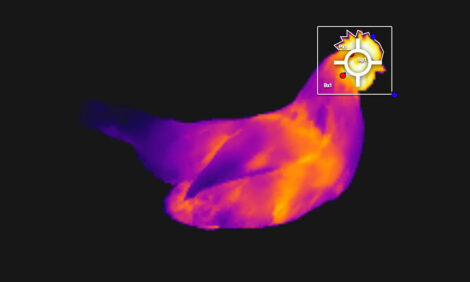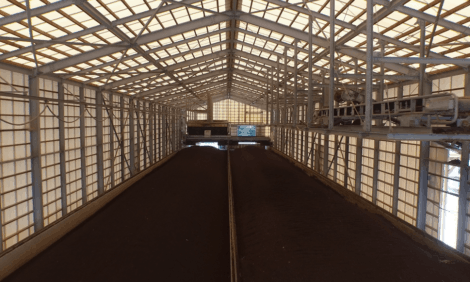



US Poultry Outlook Report - February 2006
By U.S.D.A., Economic Research Service - This article is an extract from the February 2006: Livestock, Dairy and Poultry Outlook Report, highlighting Global Poultry Industry data.
Poultry:
Higher broiler meat production in the fourth quarter of 2005 and a weakening in overall export demand caused stocks of broiler products to increase significantly, putting downward pressure on prices for most broiler parts. The lower prices have caused production estimates for 2006 to be reduced and ending stock estimates to be increased. Turkey production is expected to grow slightly in 2006 as strong prices in 2005 encourage growers to expand. Lower cold storage turkey holdings at the end of 2005 are expected to keep upward pressure on turkey prices through 2006.
Poultry Trade:
The volume and value of U.S. broiler exports in 2005 increased from last year by 8 percent and 21 percent, respectively. The strongest markets last year were Russia and Mexico, which together accounted for 42 percent of total exports. Impacts of avian influenza were felt by the U.S.– reducing foreign consumer demand and thus partially responsible for a relatively low fourth-quarter performance. Broiler exports in 2006 are expected to increase. Like broiler exports, turkey shipments and value have increased from 2004 to 2005, mainly due to the positive impact of Mexico’s growing economy on consumer demand. Turkey exports are expected to increase slightly in 2006.
Fourth-Quarter 2005 Broiler Production at 8.9 Billion Pounds
Broiler production for fourth-quarter 2005 was reported at 8.9 billion pounds, up
4.3 percent from a year earlier, chiefly the result of climbing average live weights
for broilers at slaughter. The number of broilers slaughtered in the fourth quarter
was up only 1 percent, while the average liveweight at slaughter was 5.49 pounds,
an increase of 2.9 percent from a year earlier. Over the last several months, the
percentage of broilers being slaughtered has tended to show gains in the heaviest
weight category (over 5.25 pounds) while the number of birds slaughtered have
been lower in the lightest weight category (4.2 pounds or below). Most of the birds
in the heaviest weight category are cut up for parts, and a large percentage of the
birds in the lightest weight category are sold as whole birds. The upward
movement in average size has helped contribute to the downward pressure on parts
prices and is major reason for lower whole broiler stocks.
Broiler meat production for 2005 was 35.3 billion pounds, up 3.8 percent from
2004. The outlook for 2006 is for continued expansion in broiler meat production,
but at a slower rate than in 2005. The production estimate for 2006 is 36.1 billion
pounds, an increase of only 2 percent. The 2006 production estimate was lowered
by more than 200 million pounds from last month’s estimate as processors are
expected to slow the growth in meat production in response to declines in most
prices in fourth-quarter 2005 and the large build up in stocks.
Cold storage stocks of broiler products at the end of December 2005 totaled 918
million pounds, up 29 percent from the end of 2004. The increase was due to
higher stocks of most broiler parts as the poundage of whole broilers held in cold
storage fell to 22 million pounds, down 7.6 percent from a year earlier. The
majority of the increase in cold storage stocks of broiler parts was the result of a
large increase in leg quarter stocks. Stocks of leg quarters alone totaled 176 million
pounds, 131 percent higher than at the end of 2004. Cold storage stocks were also
significantly higher for breast meat and wings (up 11 and 25 percent), but almost all
categories of broiler products showed increases. The lone exception was thigh meat
stocks, which declined 12 percent from the same period last year. Due to the rapid
build up in broiler stocks at the end of 2005, quarterly ending stock estimates for
2006 have all been increased.
The large increases in leg quarter cold storage stocks are reflective of lower demand
for exported broiler products, primarily in Eastern Europe and the Commonwealth
of Independent States. This decline in demand for export products, mostly leg
quarters, occurred just as production was increasing in the fourth quarter. U.S.
broiler meat production was up only 1 percent in third-quarter 2005, but rose 4.3
percent in the fourth quarter. As a result of the impacts of these two factors--lower
export demand and higher production--there has been a build up of cold storage
stocks and falling prices for most broiler products.
Turkey Meat Production Rises in 2005, Weights Increase
The number of turkeys slaughtered in 2005 was 248 million birds, down 2.7 percent
from 2004, but turkey meat production increased slightly (0.7 percent) to 5.5 billion
pounds. The turkey meat production increase was due mainly to average turkey
weights at slaughter rising to 28 pounds, up 3.3 percent from last year. Turkey meat
production is expected to increase slightly in 2006 as strong prices in 2005
encouraged producers to expand.
The situation for cold storage turkey stocks is the opposite from broiler products.
Total turkey cold storage stocks at the end of 2005 were 202 million pounds, down
30 percent from end of 2004. The decline was divided among whole turkeys and
turkey parts. Whole bird cold stocks at the end of 2005 were 50 million pounds,
down 53 percent and stocks of turkey parts were down 17 percent to 152 million
pounds. With a relatively small increase in production, forecast and exports
expected to increase slightly, domestic turkey consumption is forecast to decline in
2006. Turkey stocks are expected to remain relatively tight, which will keep
upward pressure on turkey prices. However, the upward pressure on turkey prices
due to tight stocks and slowly growing production will likely be moderated by the
large amounts of relatively low-cost broiler products available for buyers.
U.S. Broiler Exports Increase In 2005
U.S. exports of broiler products in 2005 were 5.15 billion pounds and were valued
at $2.1 billion, up 21 percent in quantity and 8 percent, respectively, from last year.
The increase in exports occurred in the first three-quarters of 2005 while shipments
fell sharply in the fourth quarter. Fourth-quarter export reductions were likely due
to weakening demand as outbreaks of Avian Influenza (AI) spread to areas outside
of Asia. Along with the higher volume of exports, the unit value of shipments rose
last year as leg quarter prices (the primary export product) was strong, until the end
of October. The increase in total exports last year was concentrated in a relatively
small number of important markets. The volume of shipments to Russia rose by 9
percent and those to Mexico were up 21 percent. Broiler exports also increased to a
number of Asian countries, such as Korea, Taiwan, and Hong Kong/China.
Although total broiler shipments to Cuba fell somewhat in 2004, shipments in 2005
totaled 172 million pounds, up 22.2 percent and making Cuba the third-largest
market in the Western Hemisphere after Mexico and Canada.
After very strong exports in October, shipments declined in both November and
December (766 million pounds, down 16 percent from the 2004), as shipments to
countries in Eastern Europe and Central Asia have fallen. These have been partially
offset by continued strong exports to Russia and Mexico, the two largest markets.
Exports in December were also supported by larger sales to a number of smaller
price sensitive markets that were able to make larger purchases due to the large
decline in the unit price of leg quarters. Lower leg quarter prices induced countries
such as Korea, Romania, Cuba, Guatemala, Angola, and Taiwan to increase
quantities demanded.
Exports in 2006 are expected to total 5.4 billion pounds, with exports lower in the
first half of the year, but strengthening in the second half. The export forecast is
largely contingent on developments in the geographic spread of AI. The impact of
AI on foreign demand for U.S. broiler meat will depend on whether the spread of
the disease involves relatively isolated incidents involving a small number of birds
or if the number of outbreaks are large and if there are additional concerns over
human health.
Turkey Exports Rise by 29 Percent
Turkey exports in 2005 were 569 million pounds, up 29 percent in quantity and 30
percent in value from the previous year. Most of the increase is due to strong
growth in shipments to Mexico. In 2005, shipments to Mexico totaled 354 million
pounds or 62 percent of all turkey exports. Another strong market in 2005 was
Canada, which imported 28 million pounds of turkey products, a 52-percent
increase from the last year. As with broilers, there were also higher exports to
several Asia markets, including Japan and China/Hong Kong.
Turkey exports are expected to expand slightly in 2006. Most of the growth will
come from continued strong shipments to Mexico. The growth in the Mexican
economy is expected to fuel demand for turkey products, especially those used in
manufacturing processed turkey sausage products. Shipments to China/Hong Kong,
Japan, and Korea together declined over 30 percent from the previous year.
Partially offsetting Asian declines were higher exports to Canada, Mexico, Russia,
and the NIS countries. Turkey exports followed much the same pattern as broiler
exports, in that the total 2005 quantity of shipments was down year-over-year, but
the value of shipments was up sharply.
Links
For more information view the full Livestock, Dairy and Poultry Outlook - January 2006 (pdf)Source: Livestock, Dairy and Poultry Outlook - U.S. Department of Agriculture, Economic Research Service - February 2006








